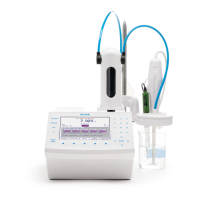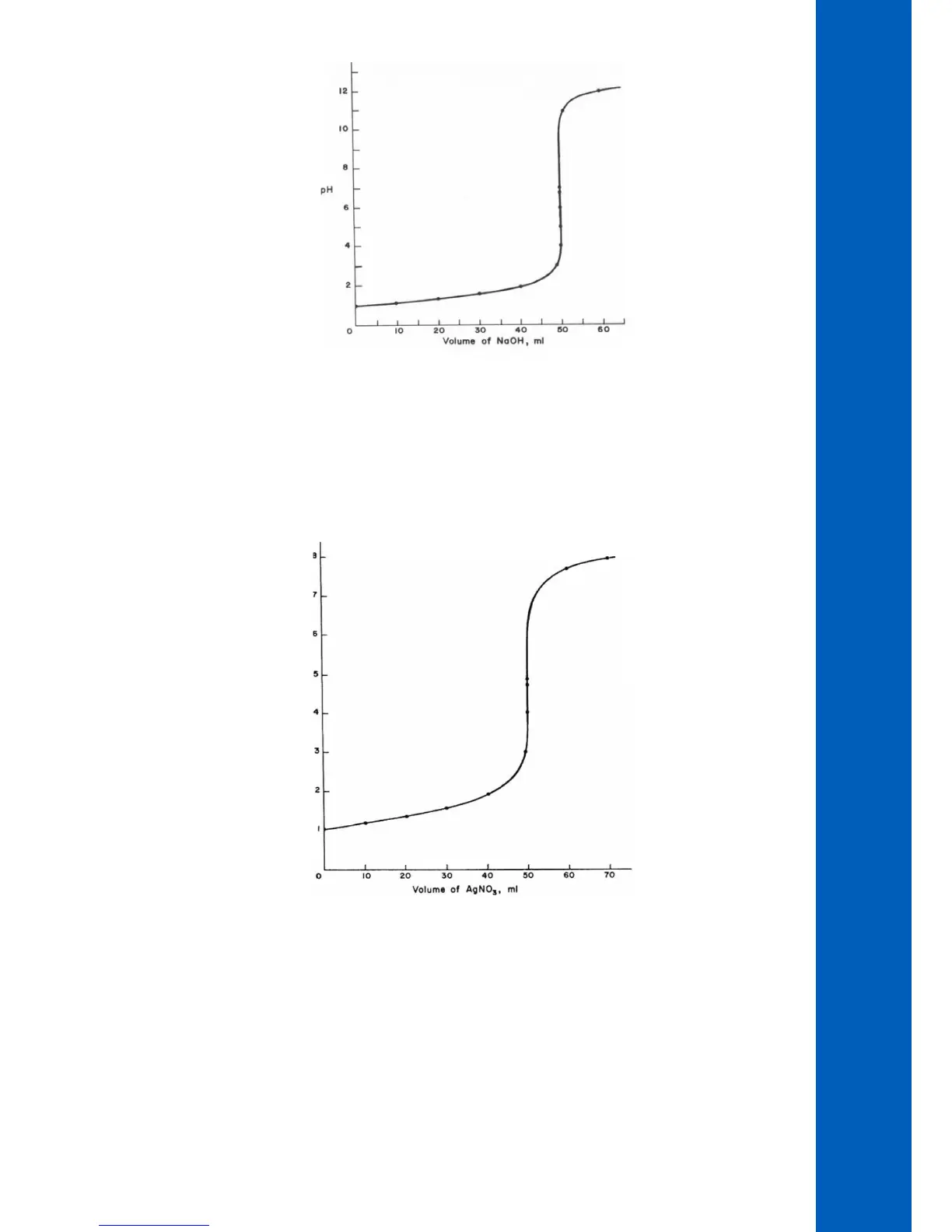Figure 4
2.2.2 ARGENTOMETRIC TITRATIONS
Argentometric titrations use silver (nitrate) as the titrant and are generally precipitation titrations, as many silver salts are insoluble.
These titrations are commonly used to titrate and determine the concentration of bromide, chloride, cyanide, iodide, and sulfide.
Argentometric titrations can be done with Mohr’s indicator (when all of the chloride has reacted, a red silver chromate precipitate is
formed) or the titration can be easily followed with a silver ISE (or chloride ISE for chloride titrations) and a reference electrode.
Figure 5 shows the titration of 50 mL of 0.1N NaCl with 0.1N AgNO
3
. The potentiometric signal is from a chloride ISE and is plotted
as pCl (- log [Cl-]).
Figure 5
2.2.3. COMPLEXOMETRIC TITRATIONS
A complex is a species where a central metal ion is covalently bonded to one or more electron donating groups called ligands. In a
complexometric titration, metal ions are titrated using a titrant that binds strongly to it. Often these titrants contain EDTA or CDTA,
polydentate ligands that form very stable coordination compounds with metal ions. The complexation reaction must be fast in order
to be useful for direct titration. Some metal ions react too slowly with EDTA for a direct titration.

